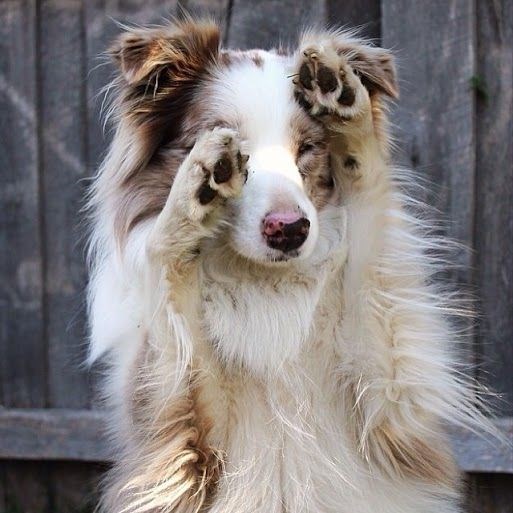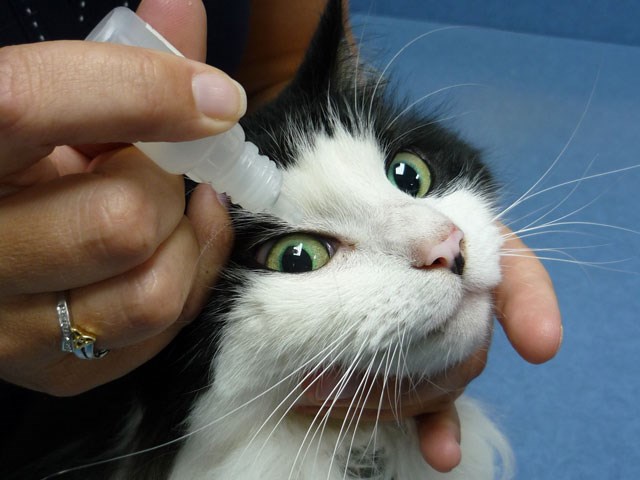Ouch - My Eye Hurts!
This blog discusses an ocular (eye) disease
we see very frequently - Corneal Ulcers.
What is a corneal ulcer?
The cornea is the outside layer of the eyeball, the part where the eye meets the outside world. It keeps all the necessary fluid inside the eye and protects the eye. An ulcer is a erosion of the superficial layers of the cornea, like a scratch. The causes an include trauma (e.g. injuries from sniffing bushes or fights), impaired immune system, or chronic dry eye. We have seen corneal ulcers in dogs, cats, rabbits, guinea pigs, and reptiles. In addition to being painful, if a corneal ulcer is not treated it can worsen and become deeper.
What are the signs of a corneal ulcer?
Depending on the severity, you may not be able to see the ulcer with your naked eye. Usually a special dye test done in the clinic is used to diagnose the condition. What you can see at home may include a red, irritated eye with ocular discharge, excessive blinking, swelling, discomfort or pain with opening the eye, or itchiness of the eye. If an ulcer is deep or extensive, sometimes you can see it without the dye.

How is it diagnosed?
Corneal ulcers are diagnosed with a special eye test done in the clinic. A topical dye called fluorescein is applied to the eyes and then a special light is shone on the eyes. A corneal ulcer will illuminate in the dye under this light. One interesting fact about this test is that the dye sometimes runs through the tear canal from the eye to the nose - so sometimes you can see the dye on the inside of the nose as well! The dye comes off the eyes, nose, and fur when washed with water, it is not a permanent dye.

How is it treated?
Depending on the severity of the corneal ulcer, treatment usually involves one or more eye drops (including antibiotic eye drops with or without eye lube), oral pain medication, and an Elizabethan collar ("the cone") to prevent rubbing. The goal of this treatment is to allow the cornea to redevelop a seal over the ulcer, like the skin redeveloping a seal over a scraped knee. The majority of ulcers heal with eye medication, pain medication, the Elizabethan collar, and patience. If you have to give your pet eye drops, it is helpful to give him or her a treat and praise afterwards so they learn to associate it with positive reinforcement. Severe corneal ulcers or those that do not heal with typical treatment may need further eye medication and in some cases surgery is performed to stimulate the cornea to heal.
